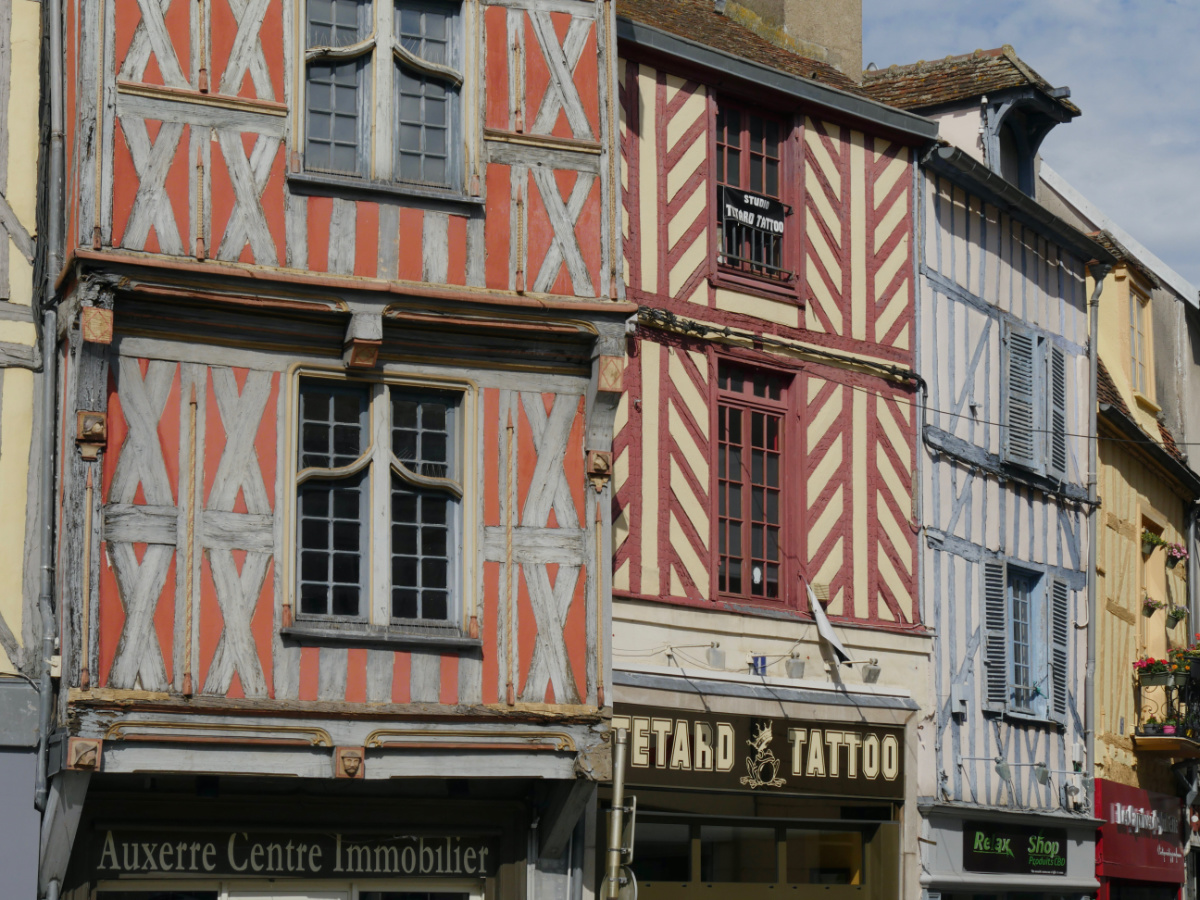Burgundy
Everyone knows Paris, but did you ever have the chance to travel to France without stopping in the big capital? Earlier in June this year I’ve made a trip to Burgundy, more precisely I saw the area around the cities of Auxerre, Dijon and Beaune. Of course Burgundy is famous for wine and cheese but these are not the topics I want to talk about here. All three of these cities are special but also they are typically French. All of them are smaller cities with lovely old city centers. Everywhere you can find very old crooked houses from the middle ages, many of them are beautifully restored and maintained. The one thing that really captured my eye this year is the materiality of these city centers. You basically know that you are in France when you start to see all houses built with that very white limestone which provides a certain, very delicate atmosphere when walking up and down the streets. These houses also feel very homogenous, very similar. They share about the same height and width, the size of the windows is similar and the whole facade seems to be made from a certain repertoire of colors, materials and forms. It’s a pleasure to explore all these details without getting bored. The streets are still unique, narrow, crooked and very detailed, it’s just that the canon of means seems to be limited to a certain amount of well planned and executed parts. This is the first thing about rural, French architecture that I didn’t realize so clearly before.
 1/1000, f/9, ISO 200, 34 mm, Lumix DMC-GX8
1/1000, f/9, ISO 200, 34 mm, Lumix DMC-GX8
The second thing is shown in today’s photo. Look at that lovely colorful timber framework. Every house feels unique and special, but again there’s a certain harmony, a certain set of tools that unites every single house with the next one. And together they form this settlement of separate units that seem to have grown together over centuries. Isn’t it amazing? Is it possible to not adore this charming beauty, not to adore these signs of the times. As old and dated these ancient constructions feel today, as much do they feel elegant and sublime. Comparing these wooden half timbered constructions with their for example German counterparts these sticks and pillars are much thinner, the distance from beam to beam is much smaller, so that the whole facade looks more detailed, intimate and rich. Also this type of half timbered construction seems to be typical for rural France in general. I’ve seen similar houses in many cities in more than one region. Today many of these old houses and construction types are meticulously restored and painted in subtle, slightly muted colors which certainly adds something to these often vibrant centers. It’s also very endearing that there are signs of craftsmanship everywhere. It’s not hidden and painted over that all these beams, stones, the plaster, the wooden windows, today’s cables in between the houses, the pavement are all done by man. The scale of these neighborhoods still feels human and intact.
And I can’t stress this out enough, when looking at these old constructions you can get a feeling of time. Time never stands still, every house is different, as every minute is different, every substance has its age, and these ages vary from one building to the next one. Nothing is finished, nothing is final, every house is like a living hour glass that allows us to focus on one single moment in time while also preparing us for what has been and what will be. It’s very different from a modern city where whole districts of a settlement are built in just one go, all in the same way, the same style with the same age and the same status of decay.
I have to confess, though, that so far I don’t know yet exactly why many of these old constructions feel rich and lively to me while many modern buildings often feel dull and uniform. Of course there are exceptions, here and there, but pivoting my current feeling to just one phrase I would say that the old architects and builders knew and understood more than we know now.